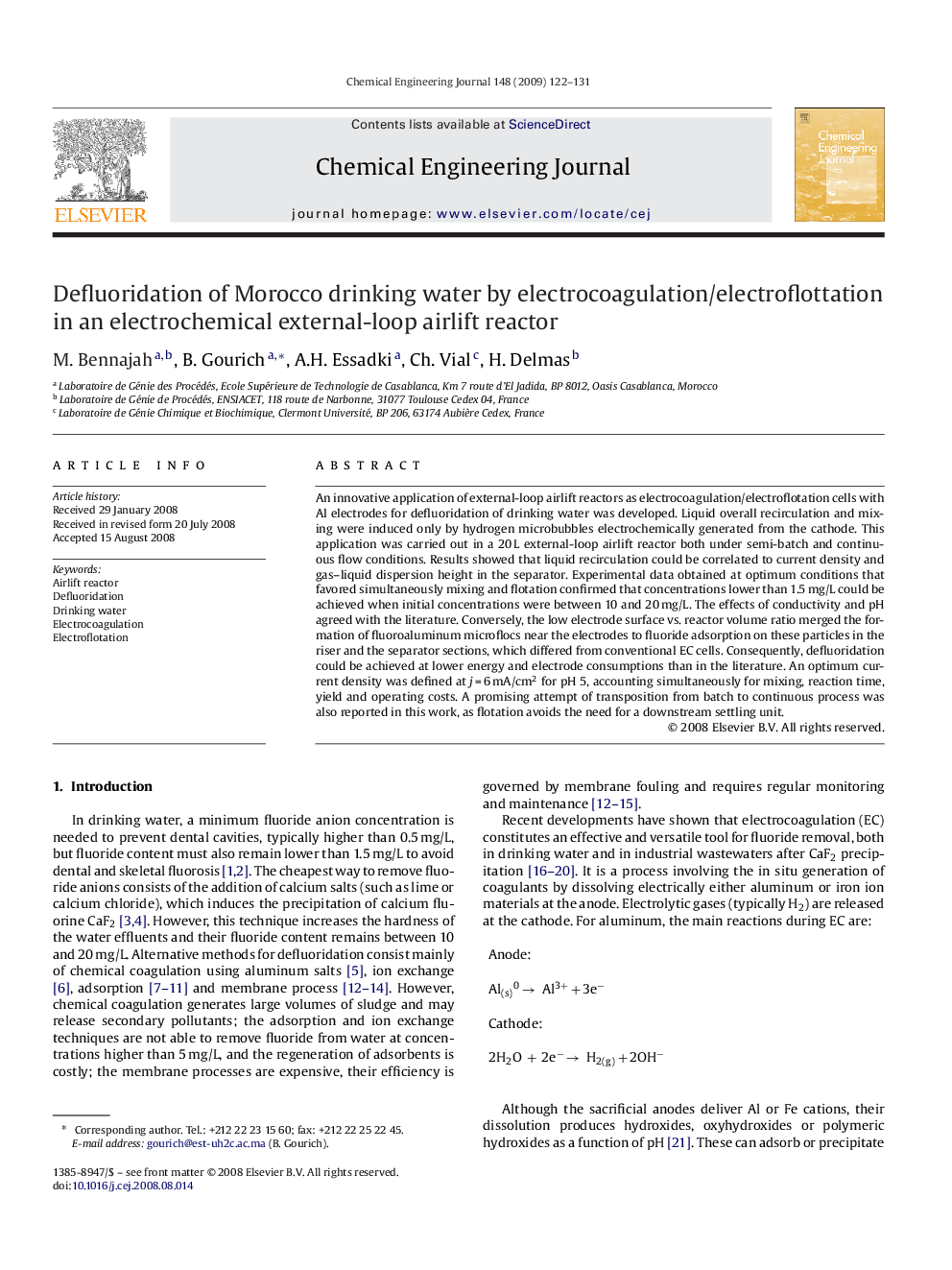| Article ID | Journal | Published Year | Pages | File Type |
|---|---|---|---|---|
| 152621 | Chemical Engineering Journal | 2009 | 10 Pages |
An innovative application of external-loop airlift reactors as electrocoagulation/electroflotation cells with Al electrodes for defluoridation of drinking water was developed. Liquid overall recirculation and mixing were induced only by hydrogen microbubbles electrochemically generated from the cathode. This application was carried out in a 20 L external-loop airlift reactor both under semi-batch and continuous flow conditions. Results showed that liquid recirculation could be correlated to current density and gas–liquid dispersion height in the separator. Experimental data obtained at optimum conditions that favored simultaneously mixing and flotation confirmed that concentrations lower than 1.5 mg/L could be achieved when initial concentrations were between 10 and 20 mg/L. The effects of conductivity and pH agreed with the literature. Conversely, the low electrode surface vs. reactor volume ratio merged the formation of fluoroaluminum microflocs near the electrodes to fluoride adsorption on these particles in the riser and the separator sections, which differed from conventional EC cells. Consequently, defluoridation could be achieved at lower energy and electrode consumptions than in the literature. An optimum current density was defined at j = 6 mA/cm2 for pH 5, accounting simultaneously for mixing, reaction time, yield and operating costs. A promising attempt of transposition from batch to continuous process was also reported in this work, as flotation avoids the need for a downstream settling unit.
